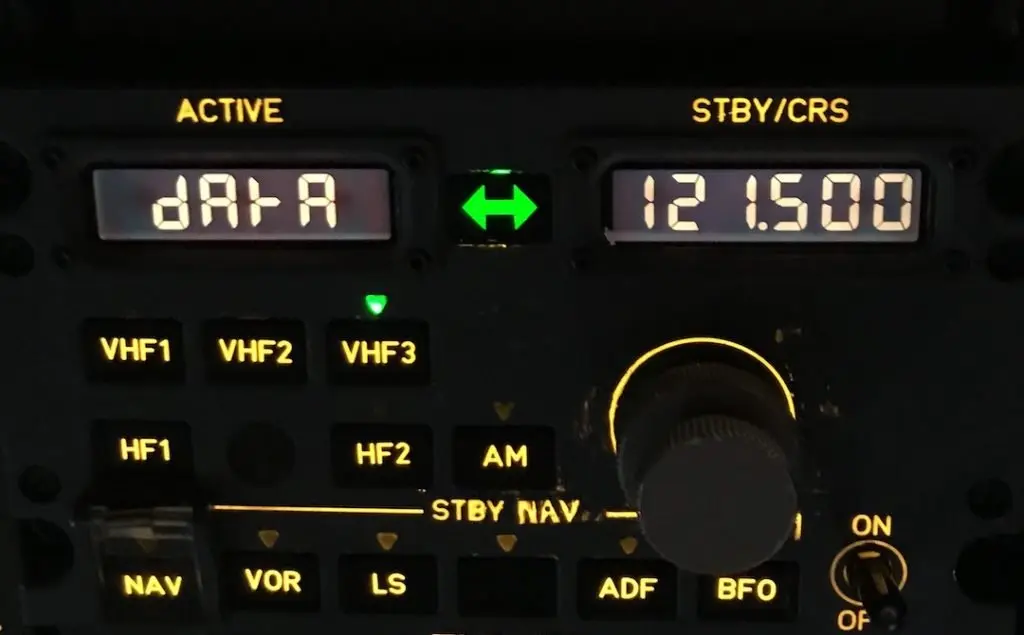I may earn a small commission from links on this page, but I only recommend quality products I trust.

Pete has been flying aircraft for the last 20 years. He has flown everything from light piston aircraft up to heavy jets as both First Officer and Captain. He’s currently enjoying life flying the Airbus A330 for a major international airline.
ACARS and CPDLC differ in five main ways: HOW they work, WHO uses them to communicate, what they are USED FOR, how they are ACCESSED and lastly WHERE they are used.
Table of Contents
Difference No. 1: How ACARS and CPDLC work
ACARS (Aircraft Communications, Addressing and Reporting System) operates over VHF, HF and SATCOM and allows automatic transmission of system information from the aircraft to the aircraft operator. Additionally, ACARS also allows pilots and airline departments to send messages to each other – for example, the transmission of a load sheet directly to the aircraft.
ACARS is also the platform over which ADS-C (Automatic Dependent Surveillance – Contract) is transmitted.
CPDLC (Controller-Pilot Data Link Communications) uses VHF and SATCOM to transmit Air Traffic Control clearances and messages from the ground to the aircraft, and vice versa.
As ACARS is transmitted in plain text it’s actually possible to receive ACARS broadcasts at home using a cheap PC dongle
The RTL-SDR dongle (Check Price on Amazon) was originally intended for people to receive TV broadcasts on their computers, but its use has been adapted by very clever people. It has a wide frequency spectrum and covers all the aviation frequencies including the ones necessary to receive ACARS.
Take a look below if you’re interested in decoding ACARS messages at home:
Related: How to receive and decode ACARS messages

The 5 Best Aviation Audiobooks (Chosen by a Pilot) A list of the best aviation audiobooks chosen by a current airline pilot. From fascinating stories at the dawn of aviation to modern day aircraft accidents.
Difference No. 2: Who Uses ACARS and CPDLC
CPDLC, as the name suggests, is for communication between pilots and Air Traffic Control, whereas ACARS is used for communication between pilots (and their aircraft) and their airline operations center, and also for general pilot operations (e.g. receiving weather reports).
Typical examples of uses of ACARS includes requesting and receiving updated weather reports and forecasts (METARs and TAFs), receiving updated flight plans from Dispatch/Operations Control, sending passenger handling information to the destination etc.
Additionally, aircraft automatically communicate with the airline maintenance department – for example, in the event an ECAM/EICAS warning is triggered, ACARS will automatically notify the airline of the system failure.

Difference No. 3: What ACARS and CPDLC are Used for
ACARS is a communications link between the aircraft and various airline departments. ACARS allows pilots to send messages directly to Dispatch or Load Planning departments, for example, by inputting the correct address.
ACARS also allows automatic messaging from the aircraft which keeps the maintenance department instantly up to date with the status of the aircraft and engines (engine monitoring function).
ADS-C, which regularly sends highly accurate position reports to ATC operates over the ACARS network.
CPDLC provides a direct link between pilots and Air Traffic Control (ATC) and this takes the place of traditional voice communications allowing the pilots to communicate with ATC via text-based messages. Routine requests such as altitude or speed changes, or weather avoidance, are selectable from menus in the FMS/MCDU. A “free text” option gives the controllers and flight crew the freedom to communicate if the pre-formatted options don’t cover the particular situation.

The 5 Best Aviation Audiobooks (Chosen by a Pilot) A list of the best aviation audiobooks chosen by a current airline pilot. From fascinating stories at the dawn of aviation to modern day aircraft accidents.
Difference No. 4: How ACARS and CPDLC are Accessed
CPDLC information (clearances, requests for information etc.) are displayed on screens directly in front of the pilots. These DCDU (Datalink Control and Display Units) are usually situated in front of both pilots and allows either pilot to handle incoming or outgoing messages.
ACARS information is usually set to automatically print out on a small printer in the cockpit (located on the center console). When airliners have a third FMS/MCDU this is usually dedicated to ACARS use.
Related: The key differences between ADS-B and ADS-C.

Difference No. 5: Where are ACARS and CPDLC available
As ACARS messages are transmitted by VHF, HF and SATCOM between the aircraft and airline it means ACARS is available almost anywhere on the planet.
CPDLC, on the other hand, is more limited due to the fact the Air Traffic Control area (FIR – Flight Information Region) has to be equipped to handle CPDLC flights.
Video Examples of CPDLC and ACARS Use
Further reading:
How CPDLC Communication Between Pilots and Controllers Works
How ACARS is Used by Pilots and Airlines on a Typical Flight
FAA Advisory Circular: Datalink Communications
ICAO Datalink Workshop Briefing
Eirtech: CPDLC and ACARS Installation Brochure
If you found this article interesting please take 5 seconds to share this on your favorite social media. Thanks so much, I really appreciate it! [email protected]

Pete has been flying aircraft for the last 20 years. He has flown everything from light piston aircraft up to heavy jets as both First Officer and Captain. He’s currently enjoying life flying the Airbus A330 for a major international airline.





